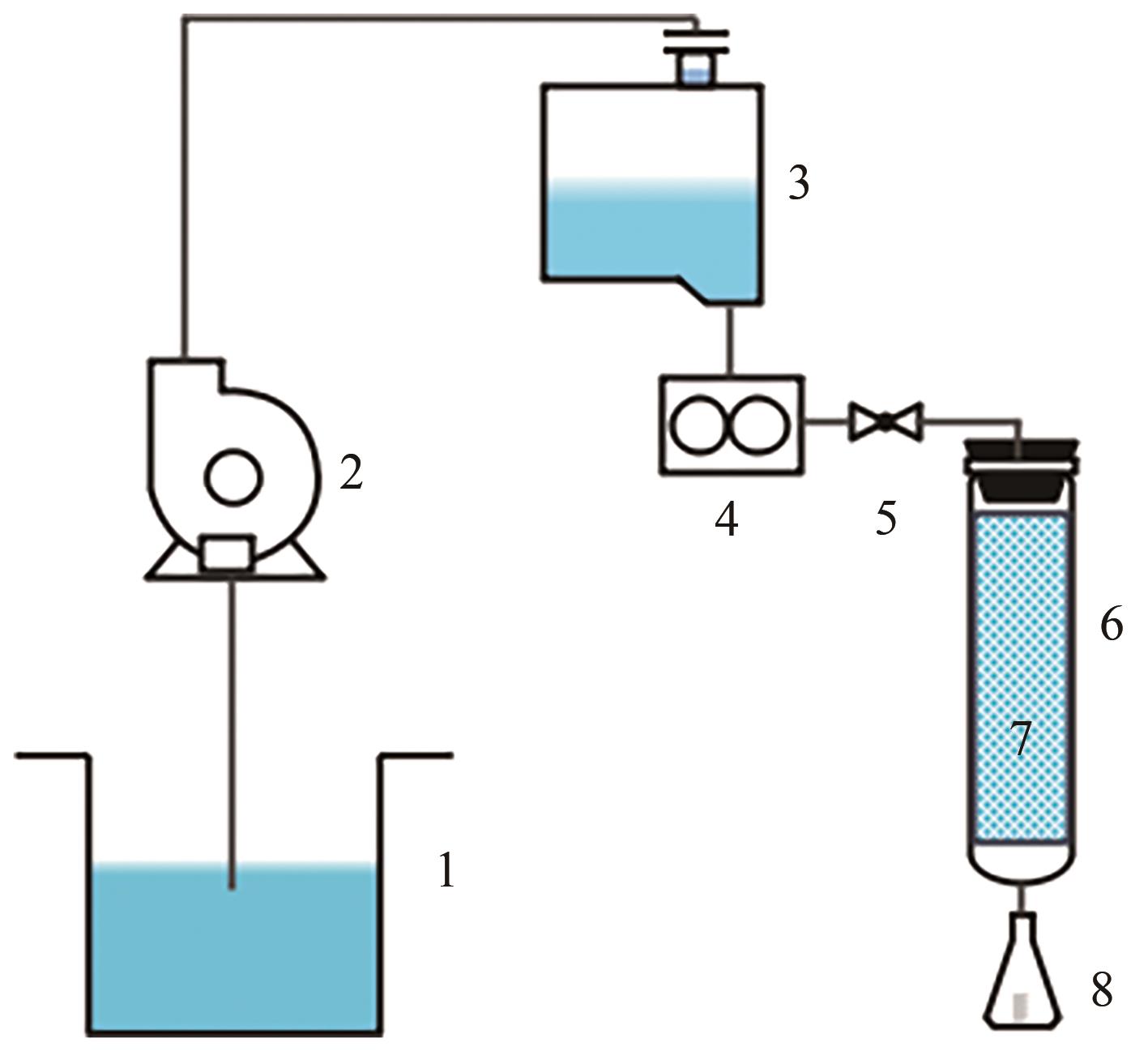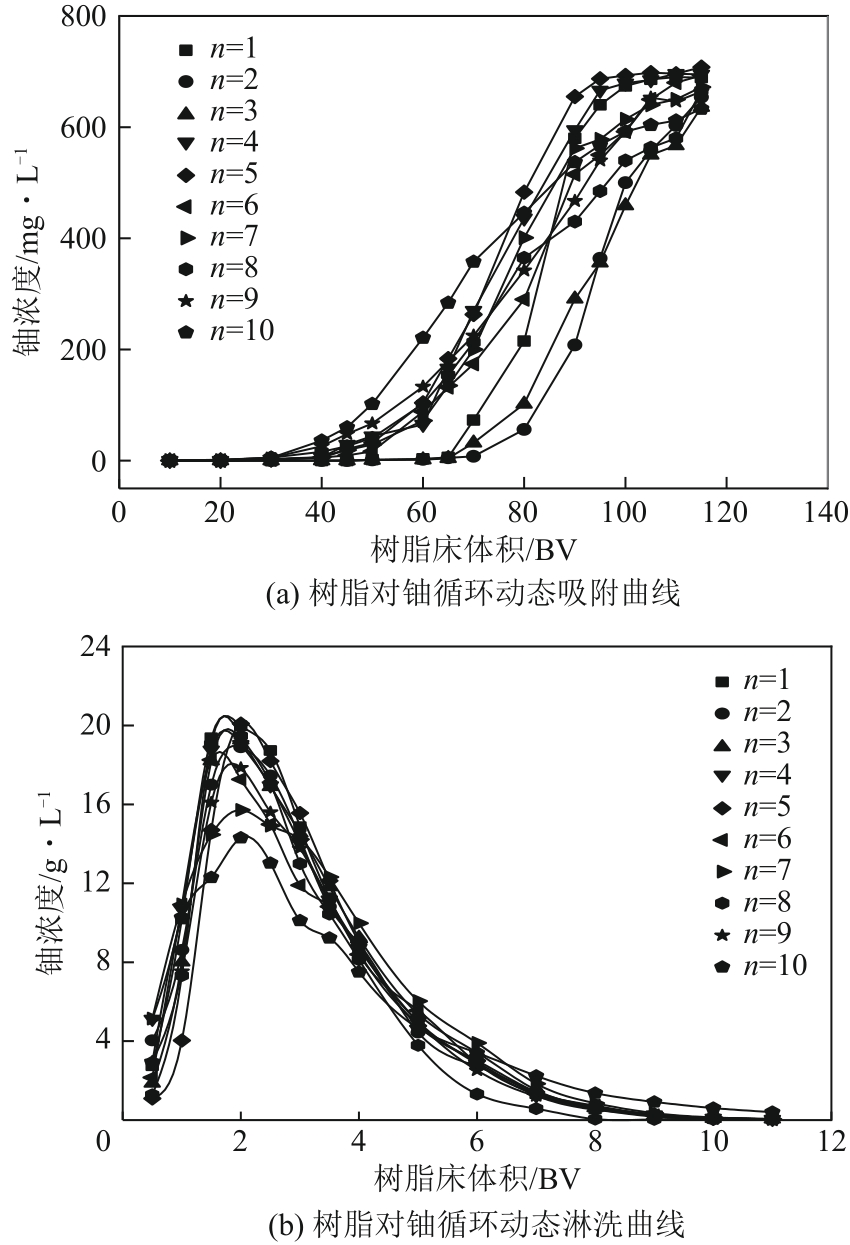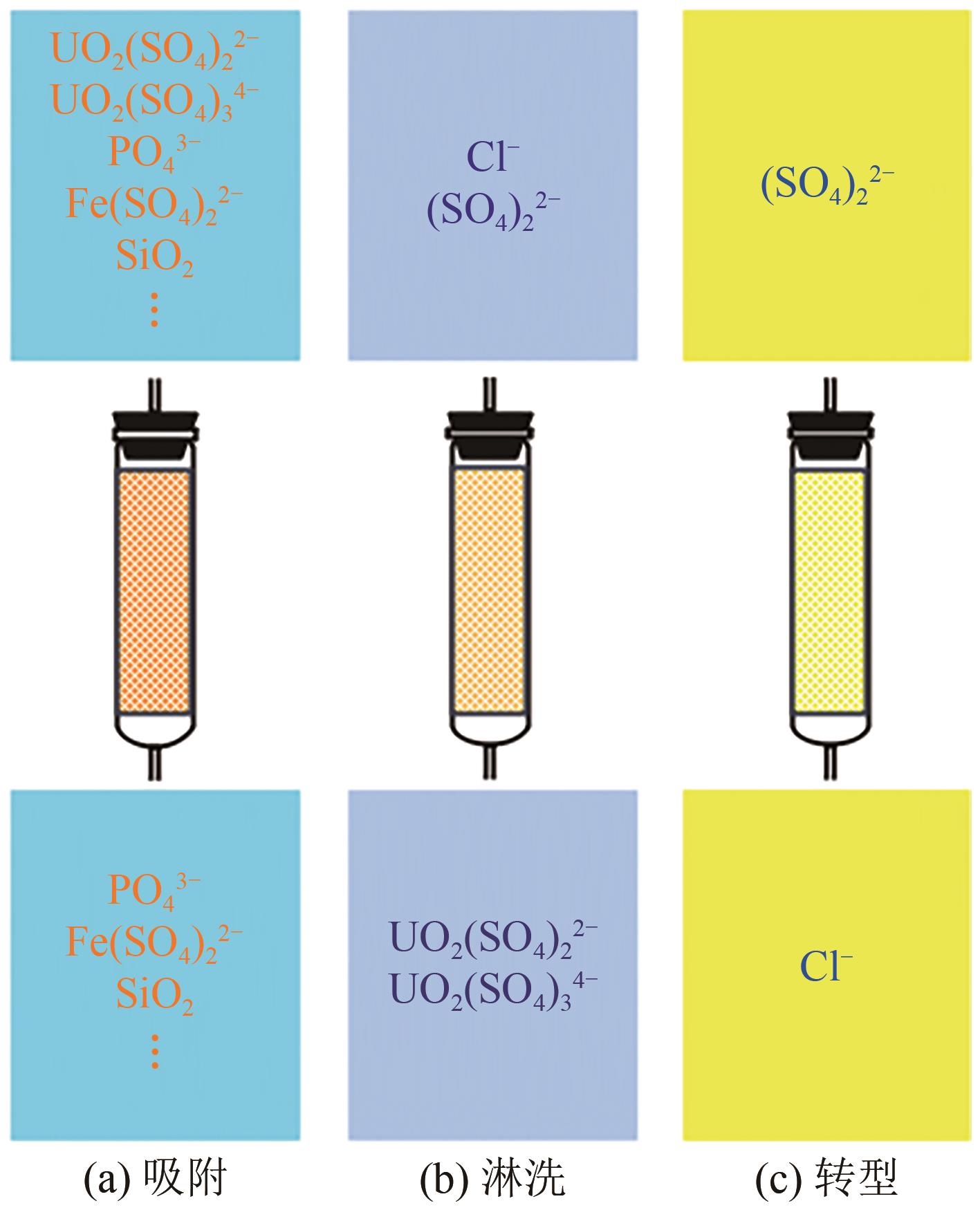| 1 |
蔡煜琦, 张金带, 李子颖, 等. 中国铀矿资源特征及成矿规律概要[J]. 地质学报, 2015, 89(6): 1051-1069.
|
|
CAI Yuqi, ZHANG Jindai, LI Ziying, et al. Outline of uranium resources characteristics and metallogenetic regularity in China[J]. Acta Geologica Sinica, 2015, 89(6): 1051-1069.
|
| 2 |
付勇, 魏帅超, 金若时, 等. 我国砂岩型铀矿分带特征研究现状及存在问题[J]. 地质学报, 2016, 90(12): 3519-3544.
|
|
FU Yong, WEI Shuaichao, JIN Ruoshi, et al. Current status and existing problems of China’s sandstone-type uranium deposits[J]. Acta Geologica Sinica, 2016, 90(12): 3519-3544.
|
| 3 |
赵凤民. 重新认识还原作用在铀成矿中的贡献[J]. 铀矿地质, 2017, 33(4): 193-198, 214.
|
|
ZHAO Fengmin. Recognition on the role of reducing action in uranium metallization[J]. Uranium Geology, 2017, 33(4): 193-198, 214.
|
| 4 |
郭建. 天然金属铀的首次发现[J]. 铀矿地质, 2016, 32(2): 128.
|
|
GUO Jian. The first discovery of natural uranium[J]. Uranium Geology, 2016, 32(2): 128.
|
| 5 |
许娜, 胡鄂明, 王俊, 等. 高品位铀废渣处理工艺试验研究[J]. 矿冶工程, 2017, 37(5): 85-87, 94.
|
|
XU Na, HU Eming, WANG Jun, et al. Experimental study on treatment of high grade uranium slag[J]. Mining and Metallurgical Engineering, 2017, 37(5): 85-87, 94.
|
| 6 |
窦小平, 熊超, 王红海, 等. 某花岗岩铀矿实验室溶浸工艺实验[J]. 核化学与放射化学, 2015, 37(6): 509-516.
|
|
DOU Xiaoping, XIONG Chao, WANG Honghai, et al. One granite uranium leaching technology test in laboratory[J]. Journal of Nuclear and Radiochemistry, 2015, 37(6): 509-516.
|
| 7 |
黄美媛. 某钼铀矿矿物特征及其利用工艺研究[J]. 矿产保护与利用, 2005(5): 36-38.
|
|
HUANG Meiyuan. Mineral characteristics study of uranmolybdatite ore and its processing[J]. Conservation and Utilization of Mineral Resources, 2005(5): 36-38.
|
| 8 |
贾秀敏, 黄永, 陈天宝, 等. 某黑色页岩铀钒矿酸浸工艺研究[J]. 有色金属(冶炼部分), 2021(4): 71-75.
|
|
JIA Xiumin, HUANG Yong, CHEN Tianbao, et al. Study on acid leaching technology of black shale uranium vanadium ore[J]. Nonferrous Metals (Extractive Metallurgy), 2021(4): 71-75.
|
| 9 |
张攀攀, 李建军, 杨彦虎, 等. 混凝沉淀法处理含铀矿井水的关键参数分析[J]. 铀矿冶, 2017, 36(4): 296-299.
|
|
ZHANG Panpan, LI Jianjun, YANG Yanhu, et al. Analysis of key parameters of uranium mine well water by coagulating sedimentation[J]. Uranium Mining and Metallurgy, 2017, 36(4): 296-299.
|
| 10 |
高锡珍, 林嗣荣, 郭尔华, 等. 用过氧化氢从下马塘铀矿石浸出液中沉淀铀[J]. 铀矿冶, 1997, 16(1): 6-12.
|
|
GAO Xizhen, LIN Sirong, GUO Erhua, et al. Precipitation of uranium by hydrogen peroxide from the liquor of Xiamatang uranium ore[J]. Uranium Mining and Metallurgy, 1997, 16(1): 6-12.
|
| 11 |
钟平汝, 曾毅君, 李建华. 一种新的铀回收工艺: 铁矾-过氧化氢两步沉淀法[J]. 铀矿冶, 2002, 21(2): 74-79.
|
|
ZHONG Pingru, ZENG Yijun, LI Jianhua. A novel uranium recovery process: Jarosite-hydrogen peroxide two-step precipitation[J]. Uranium Mining and Metallurgy, 2002, 21(2): 74-79.
|
| 12 |
牛玉清, 赵凤岐, 舒祖骏, 等. 用TBP溶剂萃取法制备核电纯二氧化铀[J]. 核化学与放射化学, 2011, 33(3): 136-147.
|
|
NIU Yuqing, ZHAO Fengqi, SHU Zujun, et al. Preparation of nuclear power grade UO2 by TBP solvent extraction technology[J]. Journal of Nuclear and Radiochemistry, 2011, 33(3): 136-147.
|
| 13 |
李大炳, 孟晋, 康绍辉, 等. 用分步萃取法从某铀钼矿浸出液中分离回收铀钼[J]. 铀矿冶, 2015, 34(3): 178-183, 188.
|
|
LI Dabing, MENG Jin, KANG Shaohui, et al. Separation and recovery of U-Mo by fractional extraction from leach liquor of one uranmolybdatite ore[J]. Uranium Mining and Metallurgy, 2015, 34(3): 178-183, 188.
|
| 14 |
El-SHAHAT M F, KAMAL H M. Recovery of uranium from its concentrated solution by tri-octyl amine using pulsed column[J]. Chinese Journal of Inorganic Chemistry, 2016(32): 1427-1433.
|
| 15 |
常喜信, 支梅峰, 周志全, 等. 用201×7强碱性阴离子交换树脂从碱性溶液中吸附铀[J]. 湿法冶金, 2021, 40(3): 236-238.
|
|
CHANG Xixin, ZHI Meifeng, ZHOU Zhiquan, et al. Adsorption of uranium from alkaline solution using 201×7 strong-base anion-exchange resin[J]. Hydrometallurgy of China, 2021, 40(3): 236-238.
|
| 16 |
花榕, 李嘉辉, 李爽, 等. LSU-1离子交换树脂对U(Ⅵ)的吸附性能研究[J]. 有色金属(冶炼部分), 2021(8): 94-99.
|
|
HUA Rong, LI Jiahui, LI Shuang, et al. Adsorption of U(Ⅵ) with LSU-1 ion exchange resin[J]. Nonferrous Metals (Extractive Metallurgy), 2021(8): 94-99.
|
| 17 |
李大炳, 康绍辉, 曹令华, 等. 用353E树脂从酸性溶液中吸附分离铀和铼[J]. 湿法冶金, 2021, 40(6): 469-473.
|
|
LI Dabing, KANG Shaohui, CAO Linghua, et al. Separation of uranium and rhenium from acidic solution using 353E resin[J]. Hydrometallurgy of China, 2021, 40(6): 469-473.
|
| 18 |
许智慧, 李宏星, 胥国龙. 用纳滤膜从酸性溶液中富集铀的可行性研究[J]. 铀矿冶, 2018, 37(1): 37-41, 46.
|
|
XU Zhihui, LI Hongxing, XU Guolong. Feasibility research on enrichment of uranium from acid solution by nano-filter membrane[J]. Uranium Mining and Metallurgy, 2018, 37(1): 37-41, 46.
|
| 19 |
夏良树, 陈伟, 周彦同, 等. 乳状液膜技术回收处理含铀溶液中铀的研究[J]. 原子能科学技术, 2014, 48(8): 1356-1363.
|
|
XIA Liangshu, CHEN Wei, ZHOU Yantong, et al. Recovery and treatment of uranium from uranium-containing solution by liquid membrance emulsion technology[J]. Atomic Energy Science and Technology, 2014, 48(8): 1356-1363.
|
| 20 |
陈波, 包申旭, 张一敏. N235浸渍树脂的制备及对钒的吸附研究[J]. 稀有金属, 2018, 42(8): 891-896.
|
|
CHEN Bo, BAO Shenxu, ZHANG Yimin. Preparation of N235 impregnated resin and its adsorption for vanadium[J]. Chinese Journal of Rare Metals, 2018, 42(8): 891-896.
|
| 21 |
张效林, 曹利, 苟小峰, 等. XDA-1树脂对茶多酚的吸附及吸附柱放大研究[J]. 离子交换与吸附, 2003, 19(3): 235-240.
|
|
ZHANG Xiaolin, CAO Li, GOU Xiaofeng, et al. Study on the adsorption of tea polyphenols on XDA-1 resins and the magnification of adsorber[J]. Ion Exchange and Adsorption, 2003, 19(3): 235-240.
|
| 22 |
王文忠. 亚胺基二乙酸树脂R604对镍离子的吸附及解吸性能研究[D]. 广州: 华南理工大学, 2010.
|
|
WANG Wenzhong. Adsorption and desorption properties of IDA resin R604 for Ni(Ⅱ)[D]. Guangzhou: South China University of Technology, 2010.
|
| 23 |
曹运兵, 谢艳新, 侯丽丽, 等. AB-8大孔树脂对1, 2-环己二醇动态吸附性能[J]. 精细化工, 2011, 28(12): 1203-1208, 1227.
|
|
CAO Yunbing, XIE Yanxin, HOU Lili, et al. Dynamic adsorption properties of 1,2-cyclohexanediol using macroporous resin by AB-8[J]. Fine Chemicals, 2011, 28(12): 1203-1208, 1227.
|
| 24 |
胡鄂明, 张皖桂, 王清良, 等. 离子交换树脂对铀的静态和动态吸附行为研究[J]. 南华大学学报(自然科学版), 2015, 29(2): 42-46.
|
|
HU Eming, ZHANG Wangui, WANG Qingliang, et al. Study of ion exchange resin’s static and dynamic adsorption behavior for uranium(Ⅵ)[J]. Journal of University of South China (Science and Technology), 2015, 29(2): 42-46.
|
| 25 |
唐晓威, 赵中伟, 刘旭恒. 串级萃取理论在离子交换固定床吸附过程中的应用[J]. 中国有色金属学报, 2019, 29(1): 138-145.
|
|
TANG Xiaowei, ZHAO Zhongwei, LIU Xuheng. Application of countercurrent extraction theory in ion exchange fixed bed adsorption process[J]. The Chinese Journal of Nonferrous Metals, 2019, 29(1): 138-145.
|
| 26 |
曾斌, 黄万抚, 曾祥荣, 等. WD918树脂吸附钨酸铵溶液中钼的性能及动力学[J]. 稀有金属, 2020, 44(7): 744-752.
|
|
ZENG Bin, HUANG Wanfu, ZENG Xiangrong, et al. Adsorption properties and kinetic of WD918 ion exchange resin for molybdenum from ammonium tungstate solutions[J]. Chinese Journal of Rare Metals, 2020, 44(7): 744-752.
|
| 27 |
张雨, 花榕, 寇晓康, 等. 氨基改性苯乙烯树脂的合成及其对铼的吸附[J]. 化工学报, 2020, 71(5): 2109-2117.
|
|
ZHANG Yu, HUA Rong, KOU Xiaokang, et al. Preparation of amino modified styrene-divinylbenzene resin and its adsorption of rhenium [J]. CIESC Journal, 2020, 71(5): 2109-2117.
|
| 28 |
王学江, 夏四清, 陈玲, 等. NDA-100树脂对苯酚的吸附性能与数学模拟[J]. 同济大学学报(自然科学版), 2006, 34(3): 368-372.
|
|
WANG Xuejiang, XIA Siqing, CHEN Ling, et al. Adsorption characteristic and mathematical modeling of phenol by NDA-100 resin[J]. Journal of Tongji University (Natural Science), 2006, 34(3): 368-372.
|
| 29 |
刘红召, 王力军, 张博, 等. 一种弱碱性树脂对淋洗液中铼的静态吸附性能[J]. 稀有金属, 2017, 41(9): 1028-1034.
|
|
LIU Hongzhao, WANG Lijun, ZHANG Bo, et al. Static adsorption properties of a kind of weak anion ion resin for rhenium in spraying water[J]. Chinese Journal of Rare Metals, 2017, 41(9): 1028-1034.
|
| 30 |
王芙香, 陈子玉, 杨玮婷, 等. ZnO@ZIF-8核壳微球的制备及对U(Ⅵ)的吸附性能[J]. 高等学校化学学报, 2019, 40(1): 24-29.
|
|
WANG Fuxiang, CHEN Ziyu, YANG Weiting, et al. Preparation and adsorption performance for U(Ⅵ) of ZnO@ZIF-8 Core@Shell microspheres[J]. Chemical Journal of Chinese Universities, 2019, 40(1): 24-29.
|
| 31 |
滕巧巧, 刘江, 吕科翰, 等. 聚苯乙烯接枝聚乙烯亚胺树脂合成及Cu2+吸附[J]. 化工进展, 2019, 38(12): 5420-5426.
|
|
TENG Qiaoqiao, LIU Jiang, Kehan LYU, et al. Synthesis of polyethyleneimine grafted polystyrene resin and its adsorption of Cu2+ [J]. Chemical Industry and Engineering Progress, 2019, 38(12): 5420-5426.
|
| 32 |
王文忠, 黄少斌. 亚胺基二乙酸树脂对金属镍的静态吸附及连续逆流U形解吸系统[J]. 化工进展, 2009, 28(11): 2040-2046, 2062.
|
|
WANG Wenzhong, HUANG Shaobin. Static adsorption properties of Ni(Ⅱ) by IDA resin and U-shaped continuous countercurrent desorption[J]. Chemical Industry and Engineering Progress, 2009, 28(11): 2040-2046, 2062.
|
| 33 |
李银萍, 汤凯, 郝营, 等. 磁性离子交换树脂的制备及其对Cr3+的吸附[J]. 材料科学与工程学报, 2016, 34(2): 301-305.
|
|
LI Yinping, TANG Kai, HAO Ying, et al. Preparation of magnetic ion-exchanging resin and its adsorption of Cr3+ [J]. Journal of Materials Science and Engineering, 2016, 34(2): 301-305.
|
| 34 |
闻振乾, 姚益轩, 牛玉清, 等. 弱碱性阴离子交换树脂对酸性含铀浸出液中铀的吸附机理[J]. 中南大学学报(自然科学版), 2016, 47(6): 1867-1871.
|
|
WEN Zhenqian, YAO Yixuan, NIU Yuqing, et al. Adsorption mechanism of weakly basic anion exchange resin for uranium in acidic leaching solution containing uranium[J]. Journal of Central South University (Science and Technology), 2016, 47(6): 1867-1871.
|
| 35 |
刘付平, 花榕, 刘恒, 等. 氨基功能化丙烯酸树脂的制备及其对U(Ⅵ)的吸附[J]. 中国有色金属学报, 2020, 30(11): 2726-2735.
|
|
LIU Fuping, HUA Rong, LIU Heng, et al. Preparation of amino functionalized acrylic resins and adsorption of U(Ⅵ)[J]. The Chinese Journal of Nonferrous Metals, 2020, 30(11): 2726-2735.
|
| 36 |
程浩, 陈亚中, 崔鹏. A222型阴离子交换树脂脱除HPPH+体系中的SO4 2-、NO3 - [J]. 化工进展, 2016, 35(S1): 316-320.
|
|
CHENG Hao, CHEN Yazhong, CUI Peng. A222 anion exchange resin for eliminating the SO4 2- and NO3 - in aqueous solution of HPPH+ [J]. Chemical Industry and Engineering Progress, 2016, 35(S1): 316-320.
|
| 37 |
刘傲, 邵功磊, 张中路, 等. 聚氯乙烯移动树脂的化学修饰、表征及对Cr(Ⅵ)的高效吸附[J]. 化工进展, 2017, 36(10): 3765-3770.
|
|
LIU Ao, SHAO Gonglei, ZHANG Zhonglu, et al. Chemical modification, characteristics of PVC resin and its adsorption properties for Cr(Ⅵ)[J]. Chemical Industry and Engineering Progress, 2017, 36(10): 3765-3770.
|
| 38 |
朱倩倩, 熊春华, 厉炯慧, 等. 吗啡啉螯合树脂对水中钨离子的吸附及解吸性能[J]. 化工学报, 2017, 68(8): 3119-3125.
|
|
ZHU Qianqian, XIONG Chunhua, LI Jionghui, et al. Adsorption and desorption of tungsten ions in water by morpholine chelate resin[J]. CIESC Journal, 2017, 68(8): 3119-3125.
|
| 39 |
金秋, 杨国玉, 谢普会, 等. 超高交联吸附树脂的合成及其对水杨酸的吸附性能[J]. 化工进展, 2015, 34(6): 1720-1724.
|
|
JIN Qiu, YANG Guoyu, XIE Puhui, et al. Synthesis of hypercrosslinked adsorption resins and its adsorption properties for salicylic acid[J]. Chemical Industry and Engineering Progress, 2015, 34(6): 1720-1724.
|
| 40 |
CHEN Fan, Miao LYU, YE Yin, et al. Insights on uranium removal by ion exchange columns: The deactivation mechanisms, and an overlooked biological pathway[J]. Chemical Engineering Journal, 2022, 434: 134708.
|
| 41 |
丁德馨, 李广悦. 溶浸采铀[M]. 哈尔滨: 哈尔滨工程大学出版社, 2015.
|
|
DING Dexin, LI Guangyue. Uranium leaching[M]. Harbin: Harbin Engineering University Press, 2015.
|
 ), 胡南1, 陈祥标1, 陈森才2, 曾冰勇2, 丁德馨1(
), 胡南1, 陈祥标1, 陈森才2, 曾冰勇2, 丁德馨1( )
)
 ), HU Nan1, CHEN Xiangbiao1, CHEN Sencai2, ZENG Bingyong2, DING Dexin1(
), HU Nan1, CHEN Xiangbiao1, CHEN Sencai2, ZENG Bingyong2, DING Dexin1( )
)








